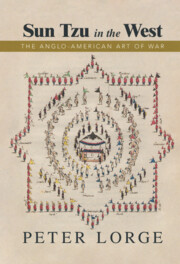Book contents
- Sun Tzu in the West
- Sun Tzu in the West
- Copyright page
- Contents
- Figures
- Acknowledgments
- Introduction
- 1 A Brief History of Sunzi in China
- 2 Journey to the West
- 3 The Armchair Captain
- 4 Stilwell, Chiang Kai-shek, and World War II
- 5 The China Marines
- 6 The Captain Who Taught a General
- 7 “The Concentrated Essence of Wisdom on the Conduct of War”
- 8 The Reaction to Griffith’s Sunzi Translation
- 9 Robert Asprey, John Boyd, and Sunzi
- Conclusion
- Bibliography
- Index
2 - Journey to the West
Published online by Cambridge University Press: 03 November 2022
- Sun Tzu in the West
- Sun Tzu in the West
- Copyright page
- Contents
- Figures
- Acknowledgments
- Introduction
- 1 A Brief History of Sunzi in China
- 2 Journey to the West
- 3 The Armchair Captain
- 4 Stilwell, Chiang Kai-shek, and World War II
- 5 The China Marines
- 6 The Captain Who Taught a General
- 7 “The Concentrated Essence of Wisdom on the Conduct of War”
- 8 The Reaction to Griffith’s Sunzi Translation
- 9 Robert Asprey, John Boyd, and Sunzi
- Conclusion
- Bibliography
- Index
Summary
The three earliest translators of Sunzi in the West – Father Amiot, Everard Calthrop, and Lionel Giles – all believed that the Chinese were fundamentally opposed to war, that Sunzi was a real person, and that his text was the paradigmatic expression of Chinese strategic thought. Samuel Griffith’s translation continued and spread this characterization into almost all of the scholarship on Chinese culture unopposed until the end of the twentieth century. Sunzi’s impact on Western strategic thought was limited before Griffith’s translation, something that has surprised many twentieth-century writers who found the Sunzi such an interesting book. Samuel Griffith tried and failed to find mentions of Sunzi in other European countries.
- Type
- Chapter
- Information
- Sun Tzu in the WestThe Anglo-American Art of War, pp. 44 - 62Publisher: Cambridge University PressPrint publication year: 2022

